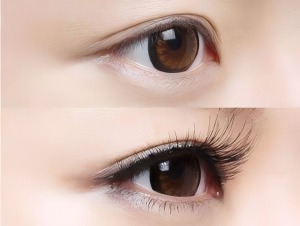Is myristoyl pentapeptide-17 safe

For enterprise skincare brands, selecting safe and effective ingredients is critical to building trust and delivering high-quality products. Is Myristoyl Pentapeptide-17 safe? This synthetic peptide, widely used in lash and brow serums, is gaining attention for its ability to enhance hair growth while maintaining a strong safety profile. Composed of five amino acids (Lys-Leu-Ala-Lys-Lys) bonded to myristic acid, Myristoyl Pentapeptide-17 stimulates keratin production, promoting thicker, longer eyelashes and brows. This article explores its safety, efficacy, and suitability for enterprise-grade skincare formulations, providing clarity for brands looking to incorporate this innovative ingredient.
Safety Profile for Enterprise Use
Is Myristoyl Pentapeptide-17 safe for widespread use in professional skincare products? According to the Environmental Working Group’s (EWG) Skin Deep database, Myristoyl Pentapeptide-17 scores low for concerns like cancer, allergies, immunotoxicity, and developmental or reproductive toxicity. A 2012 Cosmetic Ingredient Review (CIR) safety assessment of palmitoylated peptides, a similar class, found no significant irritation in a study of 96 women, suggesting a comparable safety profile for myristoyl peptides. Its gentle nature makes it ideal for enterprise formulations targeting diverse consumer bases, including those with sensitive skin.
Efficacy in Lash and Brow Products
Myristoyl Pentapeptide-17 is prized for its ability to boost keratin gene expression, enhancing eyelash and eyebrow growth. Clinical studies, such as a three-month double-blind trial with 24 participants, showed it doubled the number of hairs in the anagen (growth) phase after 45 days of twice-daily use. This makes it a standout for enterprise brands developing lash serums, as it delivers visible results without the side effects linked to prostaglandin analogs, like eye discoloration or orbital fat loss. Its targeted action ensures reliable performance in premium products.
Compatibility with Sensitive Skin
For enterprise clients, ensuring ingredient compatibility across skin types is key. Is Myristoyl Pentapeptide-17 safe for sensitive users? Its water-soluble, peptide-based structure minimizes irritation, and no significant adverse reactions were reported in clinical settings. While high concentrations may cause mild dryness in rare cases, diluting it in a stable base with preservatives, as recommended by industry standards, reduces this risk. This versatility makes it a safe choice for brands catering to a broad market, including those prioritizing hypoallergenic formulations.
Regulatory and Formulation Considerations
When incorporating Myristoyl Pentapeptide-17 into enterprise skincare lines, regulatory compliance is essential. The ingredient is not on EWG’s restricted or unacceptable lists, and its safety is supported by limited but promising research. Brands must ensure proper pH levels and preservative use to maintain stability, as improper formulation can lead to irritation. For B2B clients, this peptide’s compatibility with other actives, like Myristoyl Hexapeptide-16, enhances its appeal for creating synergistic, high-performance serums.
Why Choose Myristoyl Pentapeptide-17?
For enterprise skincare brands, Myristoyl Pentapeptide-17 offers a compelling blend of safety and efficacy. Its low hazard profile, backed by EWG and CIR data, ensures consumer trust, while its proven ability to enhance lash and brow growth meets market demand for natural, hormone-free solutions. By integrating this peptide, brands can develop innovative, safe, and effective products that stand out in the competitive skincare industry, appealing to consumers seeking visible results without compromising safety.


